We’re all well aware of the benefits of growing your own food: it’s tasty, it’s cheap and it’s fun. But what if you don’t have a big garden to grow your vegetables, fruits or herbs in?
No worries if you’re a city dweller or lack space. Indoor gardening isn’t just for houseplants! This beginners’ guide will help you learn how to grow your own crops in a normal or vertical indoor food garden.
This post may contain affiliate links. As an Amazon Associate, I also earn from qualifying purchases. You can read our disclosure information here–
Jump to: Pros & Cons | DIY Options | Commercial Options | Setup & Maintenance | Best Edibles to Grow | Common Questions
Pros and Cons of Indoor Garden Systems
Pros
If you’re wondering whether indoor gardening is for you, consider the many benefits that have made it so popular today.
Growing a food garden in general is a fantastic idea that saves you money, is better for the planet and even has proven advantages for your mental well-being.
You’ll be amazed at how good produce tastes straight from the plant, when it’s not covered in industrial pesticides, picked early, shipped across the globe and wrapped in plastic.
Since not everyone can start a garden outdoors, indoor gardening in particular is a great solution with the following benefits:
- You don’t need any outdoor space, so it’s an option for city apartments.
- It’s easier for seniors or those with mobility issues.
- You can go vertical, meaning you don’t sacrifice much indoor space.
- You control all aspects of the growing process.
- Indoor gardening year-round is possible, so the cold doesn’t get in your way.
- Greenery makes a space feel homely and natural.
- You can make it as simple or sophisticated as you want.
Cons
There are a few pitfalls when it comes to indoor vegetable gardening that are good to keep in mind. That being said, for me personally, none of them weigh up to the benefits!
Most cons can be worked around with a little creativity, so don’t let them stop you if you like the idea of growing your own food in your home. Here are the most common obstacles:
- You may have to cat-proof or child-proof your indoor food garden.
- It’s a different type of gardening, so there can be a learning curve.
- It can be expensive.
- You may need to add some protection to walls or floors, especially if you live in a rental home.
Types of indoor gardens
When it comes to indoor gardening, whether it’s a normal or vertical indoor garden, you’ll usually see people growing houseplants.
Modern houseplant growing options, like vertical plant walls and greenhouse cabinets, are very decorative and really add to a space. But did you know there are also various different types of indoor food gardens?
The vertical options especially save space while still yielding a lot of veg, herbs or fruits.
Simple DIY options
If you don’t mind your options being a little limited, there are plenty of basic indoor garden ideas that can work very well.
Here are some of the more popular options with photos to follow:
- Normal pots: It’s easy enough to set some planters with basic herbs, microgreens, lettuce and other easy food options on a sunny windowsill. You can take things to the next level by making a dedicated space with large pots and some good artificial lighting, which will allow you to grow popular options like hot peppers or even tomatoes.
- Hanging pots: Probably the most basic vertical option, making it great if you’re short on space but don’t want anything complicated. If there’s enough light, you can grow things like strawberries, lettuce and more.
- Basic indoor vegetable gardening kits: These are usually small containers that have built-in lighting and ventilation. You won’t have a lot of space to work with, but it saves you the hassle of setting everything up yourself. The Aerogarden is one of the most popular choices right now, especially for things like herbs.
- Vertical pocket system: A popular vertical option for outdoors, you can also use a pocket garden indoors as a space-saving option. Just make sure to install adequate protection for your wall! Small foodstuffs like herbs, lettuce, strawberries and similar can be grown in the pockets.
- Stackable planters: They’re very popular for growing strawberries, but did you know that herbs and small leafy greens also grow well in stackable planters? It’s a space-saving option that allows you to go as high as you’d like.
- Shelving units: Consider tall plant shelves that have space for both small and larger plants. You can even install your own lights if your home doesn’t offer enough sun to sustain food plants, which do like things bright.
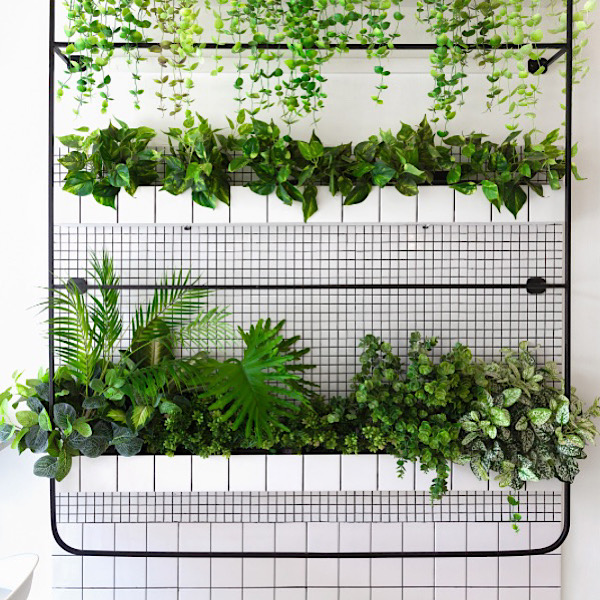
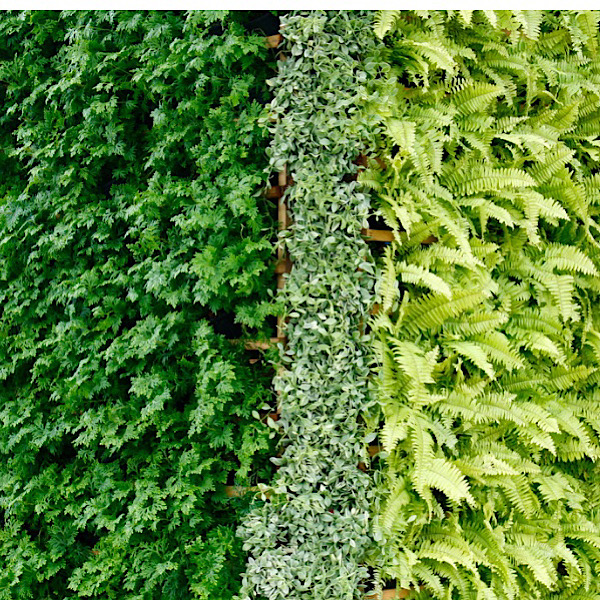
Sophisticated commercial options
Looking to get impressive yields? Although there are some DIY options for larger indoor garden systems, these are usually big projects to take on. If you prefer a “plug and play” indoor vegetable garden, why not try one of the following?
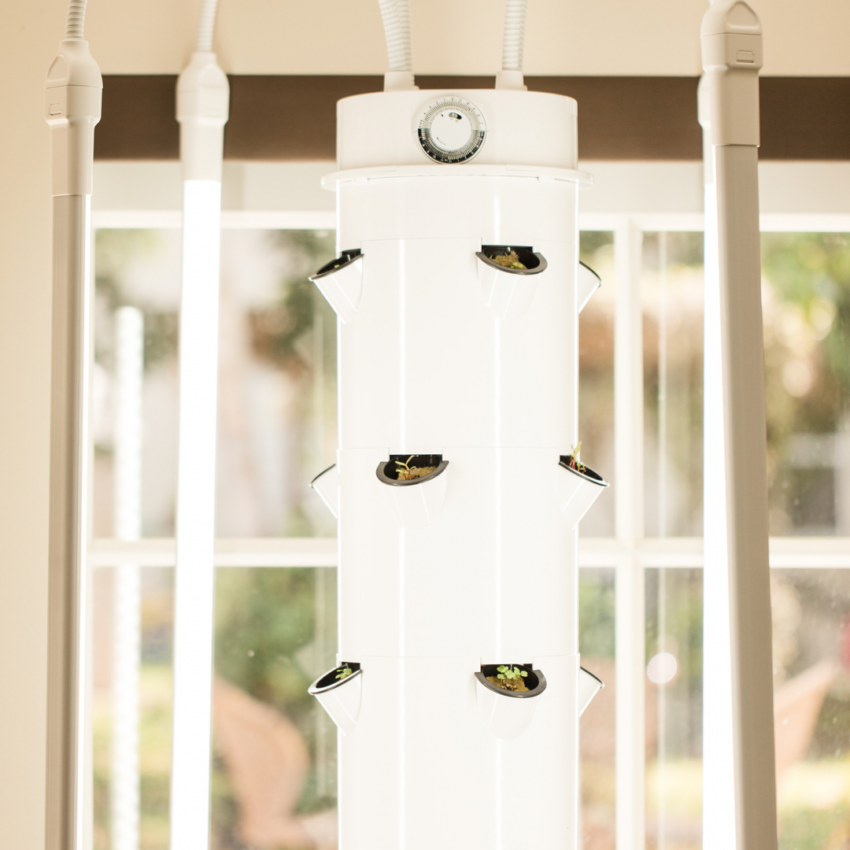
- Lettuce Grow: We’ve had good experiences with Lettuce Grow’s hydroponic farmstand, which can be used to cultivate a variety of food plants vertically without taking up a lot of space. They sell loads of different seedlings to grow in your unit.
- Click and Grow: This company offers basic vegetable gardening kits, but I particularly like their big vertical indoor garden options. Click and Grow is also a hydroponic solution, meaning maintenance will be as simple as mixing nutrient solutions as per the instructions and filling up the tank.
- Hydroponic tower garden: If you feel ready to take your indoor vegetable gardening to the next level, one of these huge hydroponics systems may be right for you. The Nutraponics tower system, for example, comes with lights and has a whopping 80 slots!
- Gardyn: Another tall hydroponics solution that even comes with its own mobile app, Gardyn has built-in lights, temperature and humidity sensors, a water level sensor and space for no less than 30 plants at a time.
- Stackable LED systems: It’s like the basic commercial indoor gardening kits I mentioned earlier, but unlimited! These handy garden systems by Mindful Design are stackable, meaning you can save space by putting up to three units on top of one another.
The best edible plants for indoor gardening
There are loads of different edible plants that can be grown outdoors! Size is a restraint, so you won’t be able to grow tall crops like corn or things like fruit trees, but don’t worry: you won’t go hungry.
Look for veggies, fruits (like berries) and herbs that are naturally small, or check if there are dwarf varieties of the species you’re interested in.
Here are some of my personal favorite plants for an indoor food garden:
- Microgreens: New to the whole indoor gardening thing (or just looking for a nutritious salad topper)? Microgreen seeds are cheap and very easy to sprout. They’re ready to harvest within days in some cases!
- Lettuce: Whether you prefer romaine, arugula, oak leaf or even iceberg, lettuce stays relatively small and is one of the easiest options for an indoor garden.
- Leafy greens: Spinach, chard, mustard greens, kale… need I go on? Dark leafy greens are very healthy and they’re not difficult at all to grow indoors.
- Herbs: Try classics like chives, basil, cilantro and mint, or go for something more exotic like lemongrass. So much better than buying half-wilted “fresh” herbs in the supermarket.
- Edible flowers: A great choice if you’re looking for something that’s both edible and decorative, edible flowers like pansies are easy enough to grow and add a touch of color to your indoor garden.
- Radishes: Because they’re among the smallest root vegetables, radishes don’t need a lot of space. They’re great for salads or pickling.
- Green onion: Since normal onions can get a little large for most indoor systems, why not try their small cousins? Also known as scallions, green onions are a great addition to a wide range of dishes.
- Mini carrots: Normal carrots need deep planters and can be a bit cumbersome, but did you know there are also dwarf varieties? ‘Thumbelina’ is the smallest and most well-known mini carrot.
- Strawberries: The #1 choice for hanging planters, strawberries can be grown indoors without too much effort.
- (Dwarf) tomatoes: Although the dwarf varieties don’t taste as nice as heirloom tomatoes, they are a great, compact option. If you have some space, you may even get away with taller tomato cultivars.
- Hot peppers: Like tomatoes, these are nightshades, and the nice thing is that they don’t grow overly large. Why not take the salsa garden concept into the home by growing some jalapeños, tomatoes and cilantro in your indoor food garden? And if your’re short on space, you can always go for micro peppers like the fiery Pequin and milder Biquinho.
- Mini peas: You’d think this has to be a hybrid or GMO pea, but Tom Thumb dwarf peas are actually a heirloom variety. They stay tiny and are perfect for indoor container gardens.
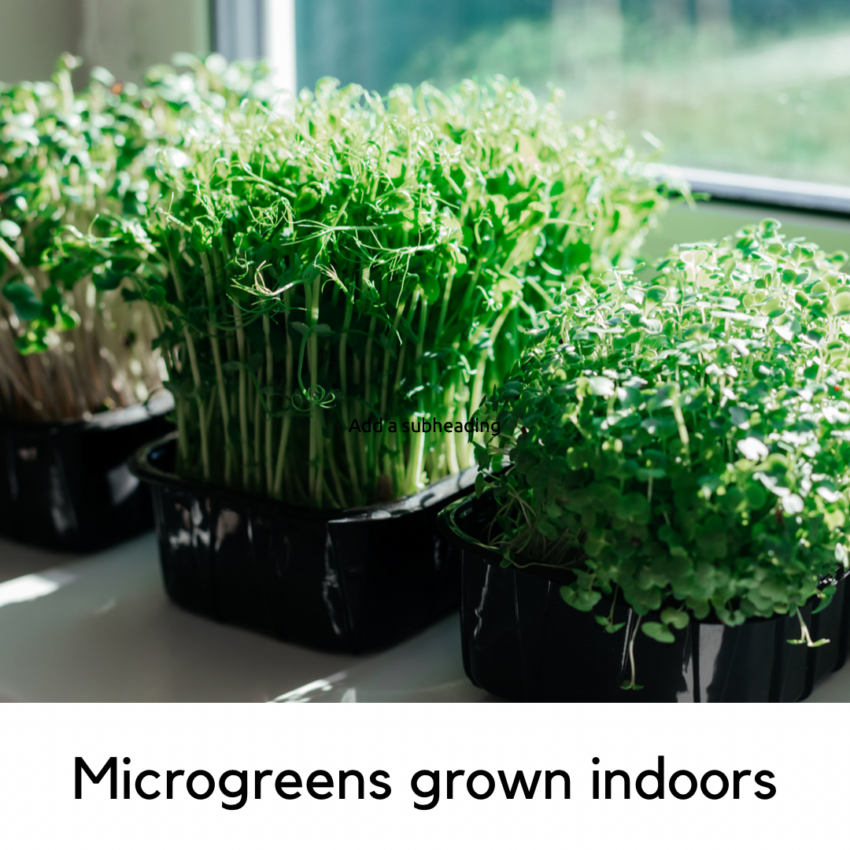
In addition to all these options, if you set up a nice indoor trellis and have good lighting, you can grow various small vining food plants.
Bonus: Have you ever considered growing your own mushrooms? It’s totally different from growing veg, fruit or herbs, but you can get great yields and it’s a fun project. Also, no extra lighting needed! You can buy mushroom growing kits online.
Setting up & maintaining vertical gardening systems
So now you know! Indoor vegetable gardening is easy, and vertical gardens in particular don’t take up too much space.
There are loads of different veggies and other edible plants you can grow, including some pretty exotic options.
If you’re ready at this point to find out how to set up and maintain your own vertical indoor garden, let’s have a look.
Location
The right location for your indoor garden is absolutely crucial, especially if you’re planning on setting up a larger system that will be difficult to move later on.
Even if it’s just a few pots, you’ll still have to make sure you find them a spot that gets plenty of light (unless you’re planning on using LED or fluorescent lights as a supplement; see below).
With big indoor garden towers and the like, don’t forget about factors like whether you should add wall or floor protection, whether the lights will bother your eyes and where to put the unit for easy access and maintenance.
Light
This is another crucial factor for indoor gardens and, in my experience, also where most aspiring urban gardeners fail. It’s imperative to remember just how much light a plant needs to survive, let alone to produce crops!
Plants that don’t get enough light grow sad and spindly, becoming vulnerable to disease and overwatering. You certainly shouldn’t expect a big yield from plants that did not get enough light.
For some species, like daylight-loving tomatoes, even a spot next to a window may not cut it. They either need to be outdoors, or they require a good artificial lighting system.
If your space is lacking in daylight and you are putting together a homemade indoor system, check out this guide to using LED or fluorescent lighting for plants.
Soil & planting
Will you be going for a hydroponics system or good old soil? Both have their pros and cons for an indoor garden.
Hydroponics saves water and is low-maintenance, but it does require you to mix nutrients and balance the pH (acidity), although with commercial kits the necessary additives and instructions are usually included.
If you’re using soil, it’s important to go for a high-quality and airy mixture. Planters should always have drainage holes to prevent your crops from succumbing to rot due to standing water. And of course you need a way to catch the drips without it going all over your floor.
Maintenance
Water
How often you need to water your food plants depends on several factors, including species, light levels and planter size.
Mediterranean herbs like rosemary don’t like for their soil to stay too wet, while lettuce is great to grow in a fully hydroponic system because it just needs water constantly!
As such, I can’t tell you how often you should water your crops. It’s best to do some research and keep a close eye on the soil.
For most types of plants, you’ll want to keep it lightly moist, never bone dry but also definitely not soaking wet.
Fertilizing
Fertilizing is very important if you want to grow vegetables, herbs and the like! As mentioned before, hydroponic units will come with special instructions when it comes to nutrients, as they don’t use soil.
If you’re growing with soil, invest in a high-quality organic fertilizer to make sure you give your plants the best. Follow the instructions on the bottle for the best results.
Pruning
In indoor gardens where space tends to be limited, it may be necessary to prune your plants or even harvest a little early to keep them under control.
Pruning requirements differ between species, so you will need to do a little research on the plant you’re dealing with to make sure you don’t accidentally damage it.
Many of the greens and herbs are considered “cut and come again” plants that benefit from regular cutting back. These types of plants are probably the easiest vegetables and herbs to start with.
Resources for more on Indoor Gardening
Indoor food gardening has become a total hot topic in the past few years. It seems us humans just need to garden to stay happy! A lot has been written, filmed and podcasted about the topic, so if you’re looking for more information, there’s plenty out there.
Here are my favorite resources:
- If you decided to buy a premade indoor garden unit, have a look at the company’s resources. They’ll often have a blog or app with good info and even recipes, like on the Click and Grow blog.
- The Treehugger blog talks about growing edible crops in a tiny house.
- The Provident Prepper talks about growing a survival garden, including a full tour video.
- Don’t want to buy a premade indoor garden unit? Learn how to build your own.
Frequently asked questions
It’s always possible for bugs to show up, and in unlucky cases, your indoor garden can even become infested with pests. However, you don’t have to worry about your house becoming overrun. I promise you won’t get spiders and beetles galore, and the critters that do show up don’t tend to leave the plants.
Depends. Are you working with natural light only? In that case it’s probably a good idea to start in spring, just as you would with an outdoor garden. If you’ve gone for artificial lighting, unless the temperatures in your space get very low, you can start plants at any time.
If you set things up properly, there’s no reason an indoor garden would leave your home dirty. Sure, you may spill a little dirt now and then, but that’s part of the fun (and nothing your vacuum can’t handle!).
Yes. Consider vegetable farms that use greenhouses: they keep going year-round as well with the help of light and temperature control. Unless you work with natural light only, it’ll be the same in your home!
If you like my articles about cooking and gardening, subscribe to my weekly newsletter, where I share free recipes and gardening tutorials.

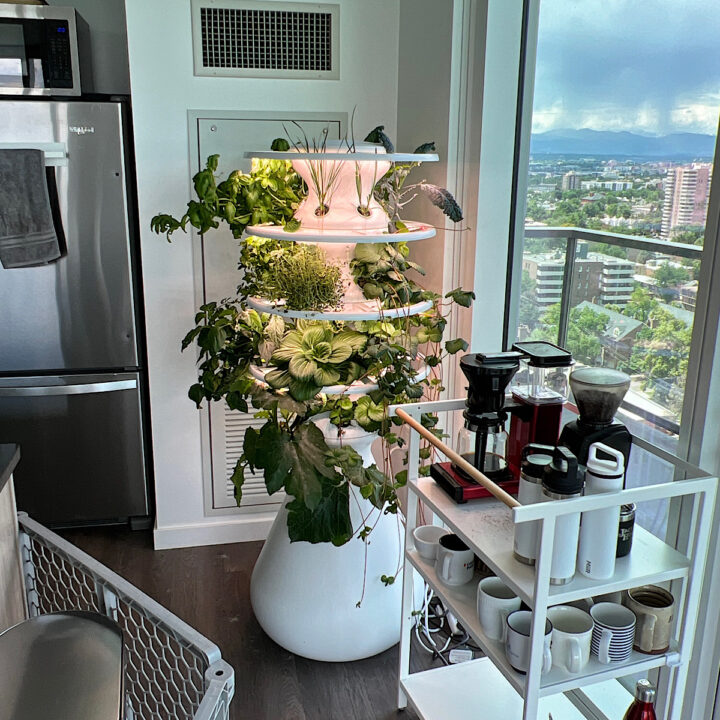
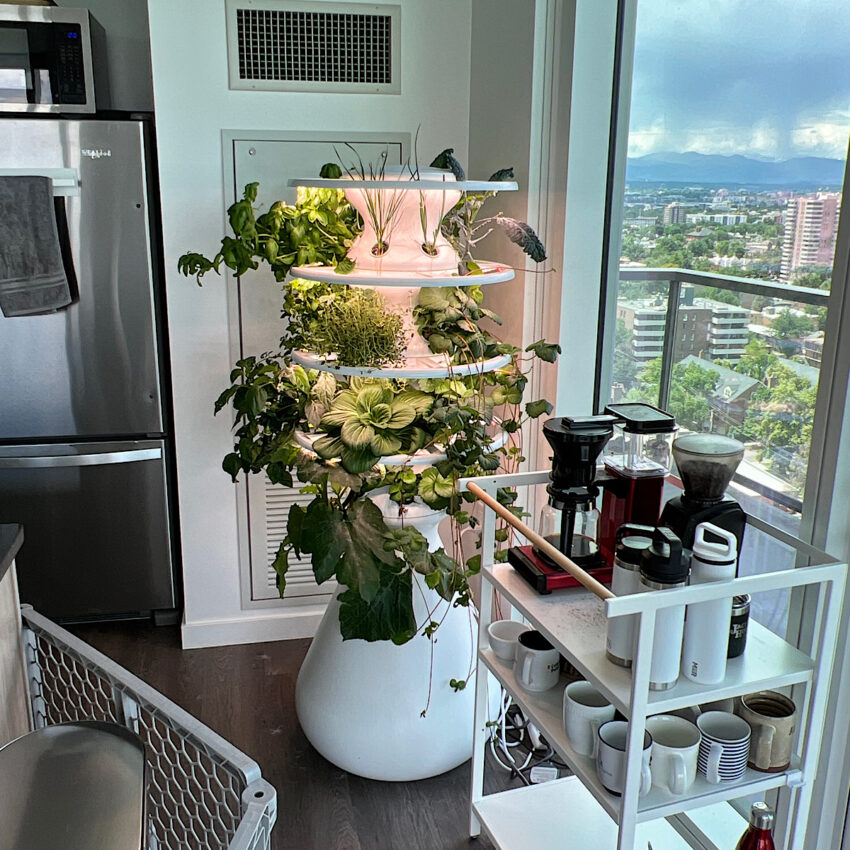
Leave a comment